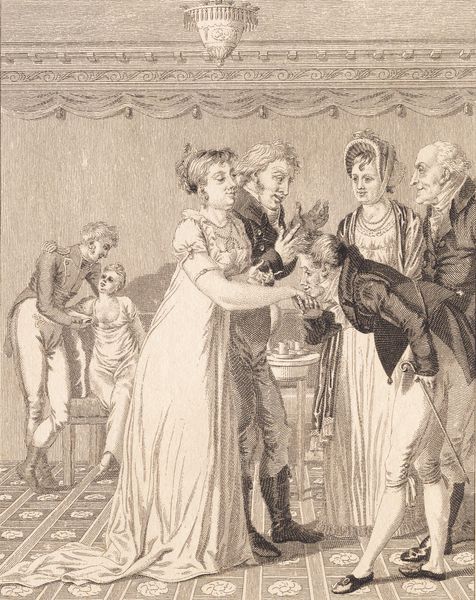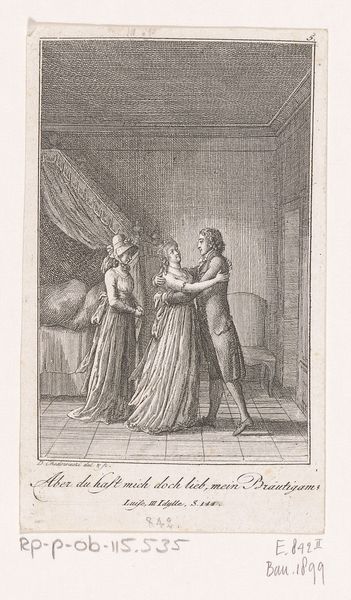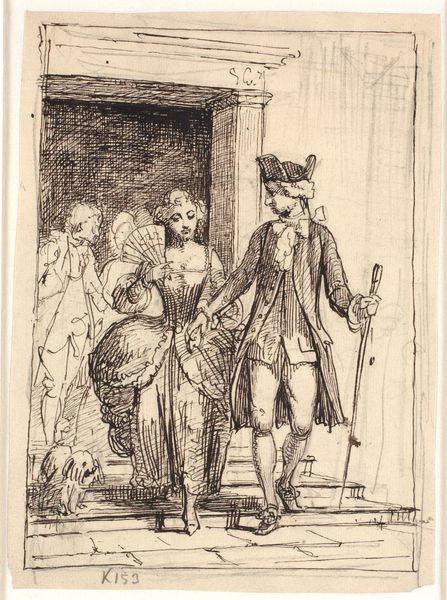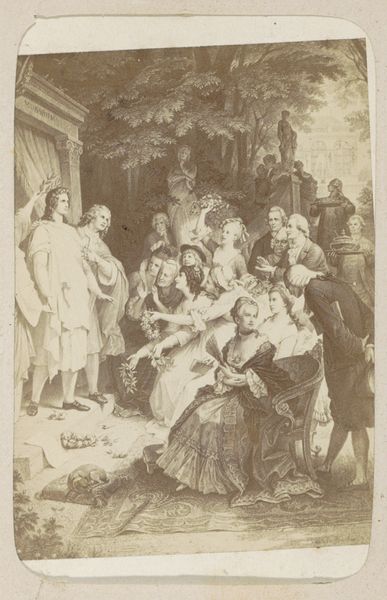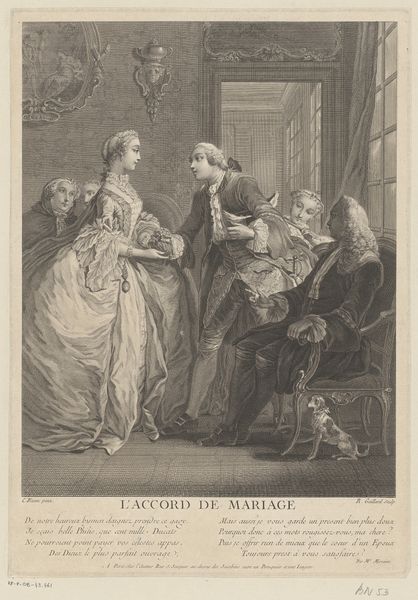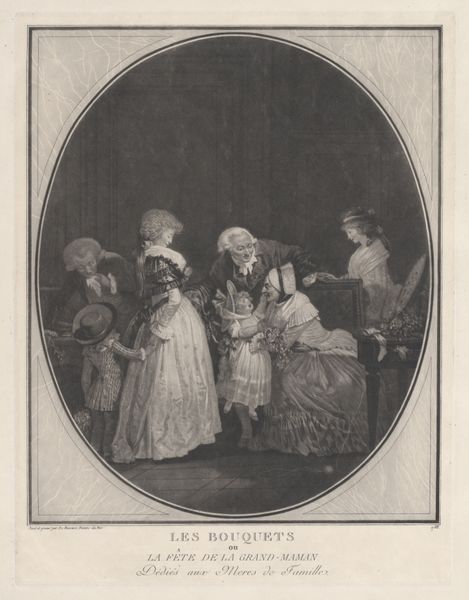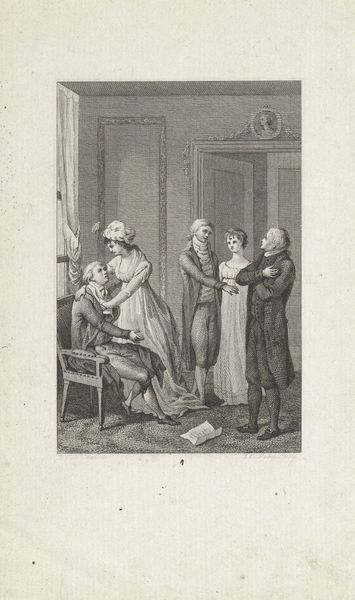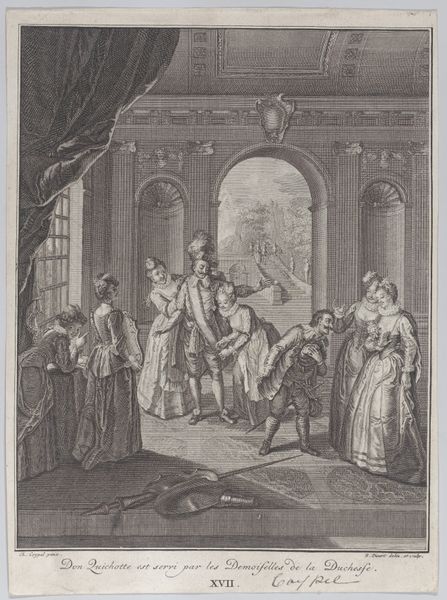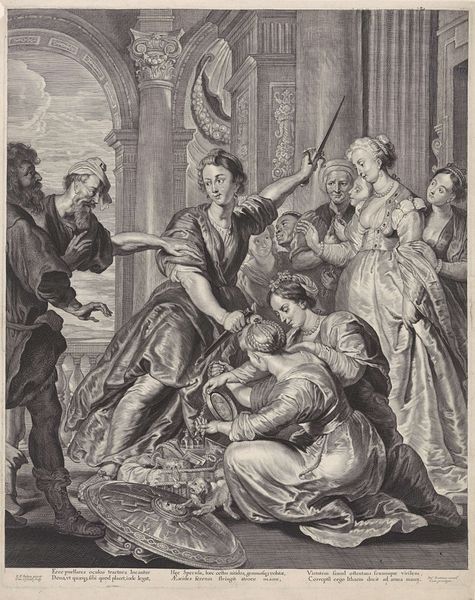
print, etching
#
narrative-art
# print
#
etching
#
figuration
#
romanticism
#
19th century
#
genre-painting
#
history-painting
Dimensions: 307 mm (height) x 213 mm (width) (bladmaal)
Curator: I see a party in full swing... or perhaps the aftermath? There’s something very Jane Austen about the gathering; a romantic, theatrical quality. What’s your take? Editor: The tableau definitely reads as staged, but not in the fun sense. Let's unpack this artwork, "The Big Ticket," etched between 1815 and 1816 by J.F. Clemens, residing in SMK, Statens Museum for Kunst. We have clear indicators that signal class differences. The artist invites us to observe systems of power and what people will do for access. Curator: Absolutely. The figures do feel arranged, caught in mid-scene. The composition pushes forward the man kissing the woman’s hand while we glimpse servants and other parties removed in the background. So, the whole work is organized by hierarchies... Editor: Spot on! Etchings like these from the Romantic era gave artists like Clemens a medium for social commentary. Notice how Clemens uses the domestic sphere, typically coded as feminine, to critique broader social ills—vanity, greed. Even the written script under the etching highlights moral corruption with one passage in Danish and the other in French: *Vanity has stopped the Work.* This all feels highly intentional and calculated. Curator: Right. It's like Clemens gives us a "Big Ticket" into a rarefied world, only to whisper, "Look closer. It’s a gilded cage." There is also the tension between capturing beauty and exposing ugly truths about ambition… the drawing teeters. It also raises all these interesting points about surface, deep, genuine, performative and sincere! The details pull us into many fascinating layers for investigation. Editor: Indeed! By emphasizing the staged nature, Clemens encourages a critical perspective. These figures aren't just individuals; they represent the dangers of unchecked privilege. Thinking about the Romantic movement which coincided with major political upheaval it is fascinating to look for similar works with parallel views. Curator: Ultimately, "The Big Ticket" seems to ask: at what cost does one climb the social ladder, and what parts of ourselves are left behind? I like this kind of social inventory. Editor: Right. And more broadly, who profits when some lose? It offers crucial conversation that extends beyond art and aesthetics.
Comments
No comments
Be the first to comment and join the conversation on the ultimate creative platform.
